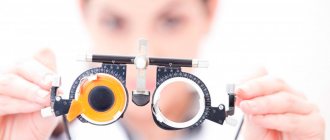Speech diction
Diction is the clear pronunciation of sounds and words with their correct articulation. The speech apparatus produces sounds, and its violations and defects are the reason that a person’s diction is of low quality.
Speech diction consists of:
- From distinct articulation;
- Correct articulation;
- Manner of pronunciation: tempo and intonation.
Clear articulation - correct and clear pronunciation of sounds. It is thanks to clear articulation that the speaker’s speech is legible and his interlocutors easily understand what he wants to convey. Violation of this indicator of diction may occur due to the physiological characteristics of a person. You can improve the clarity of pronunciation of sounds by training your tongue and lip muscles.
Correct articulation is the coordinated movement of the muscles of the articulatory apparatus. Malocclusions and frenulums have a negative effect on articulation. With such physiological deviations, burr and nasal sound may appear.
Timbre. Often, the manner of pronunciation is influenced by a person’s temperament. The speaker may tend to monotony or speed up his speech. Often it is haste that occurs in people with poor diction. But, as practice shows, almost anyone can “defeat” this problem.
Intonation. As for intonation, it is formed primarily from the ability to clearly pronounce vowel sounds and stress. You can set intonation with the help of some breathing exercises and reading aloud. Improving intonation is very difficult and painstaking work.
general characteristics
Retardation is a slowness of mental and physiological processes.
In the scientific community, the terms “bradypsychism” and “bradypsychia” are used to denote it. The most typical external signs are slow reactions, protracted speech, inability to engage in joint activities or communication that proceed at a normal pace. Inhibited people often remain alone, seem unsociable, withdrawn for no reason. The most severe variants of the disorder are observed with apathy and stupor, when patients do not respond to anything. There are three types of inhibition: ideational, motor and complex. The symptom is called ideatorial when slowness is most pronounced in speech and thinking. People show moderate or slightly weakened motor activity, but when trying to carry on a conversation, inhibition occurs - they do not have time to follow the progress of the conversation, track the change in topic, or answer the questions posed. Others get the impression that the thought process and speaking take a lot of energy from a person.
Motor retardation is manifested to a greater extent by slowing down movements. It is characterized by physical weakness, relaxed posture, and incoordination. People constantly feel the desire to lean on something stable, sit down or lie down. The decrease in speech rate is mild; communication difficulties arise only when conducting an intellectually complex or emotional conversation. With complex retardation, the mental and motor spheres suffer: patients speak quietly, with long pauses, move slowly or remain practically motionless.
Working on diction and pronunciation
Oratorical talent is extremely rare. Almost all famous people intensively prepare for every public appearance. It is known that Cicero could not utter a single word without preparation. And he is still held up as an example as a great rhetorician.
There are many exercises with which your speech can become clear and beautiful. Among them are both universal exercises and those that are designed to help correct a specific problem. For example, a whistling “S”, an indistinct “L” or a violation in the pronunciation of the sound “R”. In order to solve these problems you will have to work.
Tips for parents
It is important for the child to create a positive speech environment.
Repeatedly talk through ordinary, daily activities:
dressing, washing, eating, bathing, walking, getting ready for bed, going to bed, cleaning the room and toys, cooking. All these processes must necessarily be accompanied by the speech of adults.
Say nursery rhymes, tongue twisters, proverbs, proverbs, sing songs
.
Talk to your child as often as possible
, listen carefully to his answers to questions. This will not only improve your baby’s speech, but will also establish a trusting relationship between you.
Read together
, discuss what you read, illustrate the plot together, discuss the drawings.
Exercises for diction and voice
When speaking in public or during normal conversation, we use the muscles of the tongue and throat. It is logical that in order to speak beautifully, you need to “pump up” these muscles.
Exercises that will help prepare the necessary muscles:
- You can pump up the muscles involved in producing sounds by regularly pronouncing “A-E-O”. At the same time, it is important to try not to open your mouth too much. The effect can be achieved by pronouncing sounds as deep as possible in the oral cavity.
- A very good effect can be achieved in diction and by training your lips. To do this, you need to say: “GL”, “VL”, “VN” - for the upper lip and “KS”, “GZ”, “VZ”, “BZ” - for the lower lip.
- You can also shape your tongue into a shovel shape and say “I” and “E” several times. Now let’s give the tongue a hook shape and simultaneously pronounce “O” and “U”.
- We continue to “pump up” the muscles of the tongue. We close our mouth and, using internal movements of the palate, cheeks and lips, make the sound “M”.
Diagnostics
The tactics of diagnostic examination depend on the suspected cause of slurred speech. The algorithm consists of medical and pedagogical aspects: the first allows for nosological diagnosis, the second - to establish the leading mechanism and degree of speech dysfunction:
- Neurological diagnostics.
Indicated for patients with dysarthric disorders. Cerebral MRI is performed to visualize focal brain lesions. To assess the severity of paralysis and paresis of articulatory muscles, electrophysiological studies are used: ENG, EMG. - Dental examination.
Required for persons with edentia, jaw dislocation, or poor-quality prosthetics. Diagnostics may include X-ray of the TMJ, orthopantomography, CT scan of the jaws. To make prosthetics, impressions are made and diagnostic models are cast. - Audiological examination.
If slurred speech is due to hearing loss, an audiogram, otoacoustic emissions, and auditory recordings are performed. An audiologist consults the patient with the test results. - Examination of the pharynx.
During pharyngoscopy, the peritonsillar abscess is visualized as a spherical, fluctuating formation. The mucous membrane is hyperemic, and pus can be seen through it in the place of greatest bulging. Sometimes a test puncture of the abscess is performed for differential purposes. - Speech therapy examination.
Assessment of the state of oral speech is necessary for dysarthria and rhinolalia. The speech therapist identifies articulatory difficulties, defects in sound pronunciation (substitutions, distortions, omissions), agrammatisms, and determines the coherence and intelligibility of speech.
Speech therapy classes
Exercises for diction and articulation
Since the tip of the tongue is actively involved in clear pronunciation, we use exercises that develop its flexibility:
- Imagine that your tongue is a hammer and hit your teeth with its tip. During such blows, “pronounce” yes-yes-yes-yes. Then try to clearly pronounce the letters “T-D”.
- To clearly pronounce the letters “K” and “G” you need to “pump up” your larynx. To do this, inhale through your nose and completely empty your lungs through your mouth. The release of air through the mouth should occur sharply and resemble the sound “Fu”. Do this exercise several times.
- If you notice that you have a problem pronouncing the letters “P” and “B,” then train your labial muscles. To do this, you need to puff out your cheeks and release the air from your mouth with a vigorous clap.
- It is also very important to learn how to control the amount of air. To do this, you need to use breathing exercises and practice in front of a mirror. Try reading a short text at normal volume. As a rule, you can easily control your voice. Now, do the same, but increasing the volume. There must be problems.
Treatment
The methods of primary therapy depend on the cause that provoked the inhibition. As part of the treatment program, various methods are used: drug correction, psychotherapy, targeted stimulation of intellectual functions and motor activity. All activities are aimed at restoring physiological brain processes responsible for the dynamics of psychomotor activity, as well as training mental and physical skills.
Taking medications
Drug therapy is prescribed to most patients and is aimed at improving the metabolism of nerve cells and tissues, protecting them from damaging factors, and slowing down death. Restoring active blood supply improves the functioning of various parts of the brain. As a result, mental activity is activated and symptoms of inhibition are reduced. Patients are advised to take neuroprotectors and nootropics.
Psychotherapy and psychocorrection
Psychocorrectional classes are aimed at increasing the speed of cognitive functions. They include exercises such as selection of associations, generalization of concepts, analysis of logical sequences, and solving intellectual problems. The correctness of the results and the speed of completing tasks are taken into account. During psychotherapeutic sessions, methods of social adaptation of a person with inhibition are mastered. The specialist gives recommendations on choosing a professional field, helps to master behavioral and speech skills that compensate for slowness.
Summing up
The prognosis is relatively favorable with an early start of correction and the presence of psychological causes of disorders of motor activity and speech motor skills. However, after regaining your skills, you should be observed by doctors for a long time and constantly independently monitor your movements and train of thoughts.
As preventive measures, damage to the central nervous system should be prevented, head injuries should be avoided, and asthenic syndrome should be detected in time.
Pathological inhibition of thinking involves various mental and pathophysiological disorders. This phenomenon should be qualified as a symptom that in most situations occurs in older people. But in certain cases, a similar problem can manifest itself in childhood and young people.
If you notice that your thinking processes are slow, you should immediately seek advice from a doctor. It is likely that this condition is the result of dangerous disruptions in the functioning of the central nervous system and requires special correction.
Development of depression
Further, all manifestations worsen: attacks of melancholy become more frequent and lengthened, physical retardation becomes more pronounced, desire decreases until libido fades. Speech becomes impoverished, becomes monosyllabic, “dull,” and slow. Professional skills are partially lost.
Women have a tendency to self-blame. They consider themselves incapable of professional activity, unsuitable for family relationships, and incompetent in terms of raising a child. During this period, daily mood swings are common, with patients feeling worse in the morning than in the evening.










